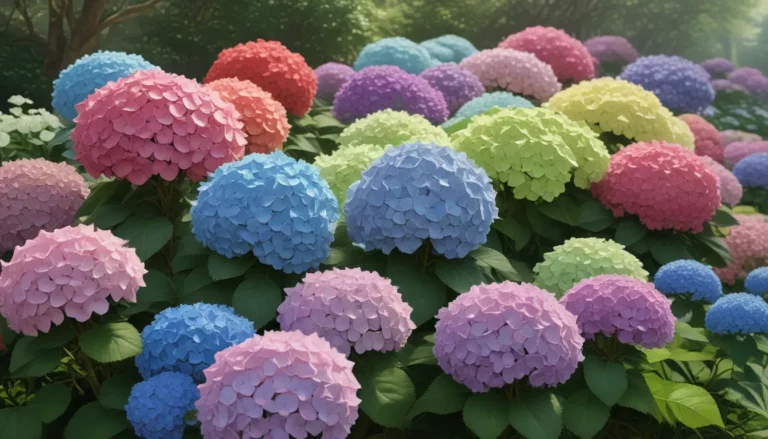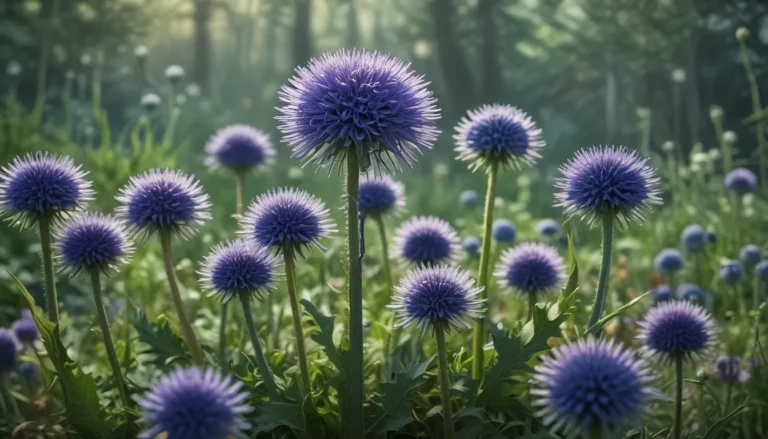How to Successfully Plant and Cultivate Anemone Flowers

Anemones, also known as windflowers, are vibrant flowering perennials that can bring color and beauty to any garden. With a wide range of varieties to choose from, these plants are not only lovely to look at but also easy to grow and maintain.
Whether you are considering adding anemones to your garden for the first time or you are a seasoned gardener looking to expand your floral repertoire, this guide will provide you with all the information you need to successfully plant and cultivate anemone flowers.
Getting to Know Anemones
Anemones belong to a diverse genus in the buttercup family, with over 120 species of flowering plants native to temperate, subarctic, and subtropical regions across the globe. These herbaceous perennials offer attractive flowers that bloom for extended periods, making them a favorite of pollinators like bees and butterflies.
When it comes to gardening, anemones can be categorized into three main groups:
Spring Flowering
- The spring flowering species, such as A. blanda, are low-growing plants with charming daisy-like flowers that bloom in bright shades of blue, magenta, and white.
- These species are typically hardy and can thrive in USDA Hardiness Zones 4-9.
- Perfect for planting alongside early bloomers like daffodils and snowdrops.
Summer Flowering
- Poppy anemones, coming from the A. coronaria species, bloom in vivid colors like magenta, scarlet, and pink with parsley-like foliage.
- These summer flowers prefer full sun and are great for bridal bouquets.
- Hardy in Zones 7-10, they can be grown as perennials or annuals depending on your climate.
Fall Flowering
- Fall flowers come from varieties like A. hupehensis and A. x hybrida, known as Chinese or Japanese anemones.
- These plants have tall, saucer-shaped flowers in shades of mauve, pink, and white.
- Hardy in Zones 4-8, they are exceptional as cut flowers and attract late-season pollinators.
Anemones have a rich history of cultivation, with references dating back to the first century AD. Despite some dark associations in folklore, these flowers are beloved for their natural beauty and ease of care.
Planting and Growing Anemone Flowers
Anemones are relatively low-maintenance plants that thrive in humus-rich, well-draining soil with full to part sun exposure. Planting in the fall is ideal for perennial growth, but certain species like A. coronaria can be grown as annuals in colder regions.
Key tips for successfully growing anemone flowers include:
- Ensuring the soil is evenly moist but well-draining to prevent root rot.
- Providing full sun exposure, with afternoon shade in hot regions.
- Applying a winter mulch to protect roots from freeze and thaw cycles.
- Pruning back foliage as needed and applying organic matter or fertilizer in spring.
Propagation techniques include plant division or root cuttings, making it easy to expand your anemone collection over time. Certain cultivars like A. blanda ‘Blue Shades’ and A. coronaria ‘De Caen Mix’ offer a range of colors and sizes to suit your garden style.
Maintaining Your Anemone Garden
Pest and disease management for anemones is relatively straightforward, with issues like caterpillars, slugs, and leaf spot being common but easily managed. Regular watering, proper air circulation, and good drainage are key to preventing these problems.
A variety of cultivars like ‘Honorine Jobert’ and ‘Mona Lisa’ offer unique colors and features to enhance your garden’s aesthetic. From mass plantings in beds and borders to container gardening and rockeries, anemones can adapt to various garden settings.
Incorporating anemones alongside other early spring bloomers or late-season plants can create a dynamic and vibrant garden space. Their adaptability and resilience make them a popular choice for both novice and experienced gardeners looking to add color and charm to their outdoor spaces.
Cultivating Anemone Flowers: A Quick Reference Guide
- Plant Type: Flowering perennial
- Hardiness (USDA Zone): 3-10, depending on species
- Bloom Time / Season: Early spring-fall, depending on species
- Exposure: Full to part sun
- Height: 4-48 inches, depending on species
- Spread: 3-24 inches, depending on species
- Water Needs: Moderate
- Maintenance: Low
- Tolerance: Deer, rabbits, rodents, salt
- Soil Type: Humus-rich, well-draining
- Attracts: Bees, butterflies, and other pollinators
Appreciating the Beauty of Anemones
In conclusion, anemones are versatile and visually appealing flowers that can add vibrancy to any garden. Their wide range of colors, sizes, and blooming periods make them an excellent choice for gardeners looking to cultivate a diverse and dynamic outdoor space.
Whether you choose to plant spring, summer, or fall flowering species, anemones are sure to delight with their stunning blooms and low maintenance requirements. By following the tips and information provided in this guide, you can confidently grow anemone flowers that brighten and beautify your garden throughout the year.





